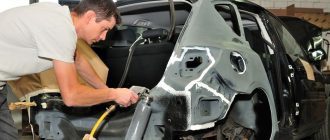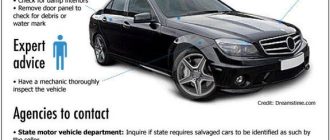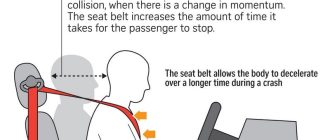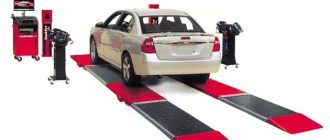
Summer Driving: Tips for Maintaining Your Car’s Exterior
Summer is a time for road trips, beach adventures, and long drives with the windows down. But with all the fun comes the need for proper car maintenance, especially when it comes to the exterior. The hot weather, sun exposure, and road debris can take a toll on your vehicle’s appearance and performance. To keep your car looking its best and ensure a smooth summer driving experience, here are six essential tips for maintaining your car’s exterior.
1. Wash and wax regularly: Regular washing and waxing are crucial in protecting your car’s paint from the harsh summer elements. Washing removes dirt, dust, and salt, while waxing provides a protective layer against UV rays and helps maintain the shine.
2. Check and clean the headlights: Good visibility is key to safe summer driving. Make sure your headlights are functioning properly and clean any dirt or debris that may have accumulated on them. If the headlights appear foggy or dim, consider replacing them to improve visibility.
3. Inspect and clean the windshield and wipers: Summer brings bugs, tree sap, and other debris that can hinder your vision. Regularly inspect your windshield for cracks or chips and clean it using a windshield cleaner. Also, check the condition of your wiper blades and replace them if they are worn or not cleaning effectively.
4. Protect the tires: The hot pavement can cause your tires to expand, leading to increased wear and tear. Inspect your tires regularly for any signs of damage or low tread depth. Also, make sure they are properly inflated according to the manufacturer’s recommendations.
5. Avoid parking under direct sunlight: Excessive exposure to the sun’s rays can fade your car’s paint and cause it to peel or crack over time. Whenever possible, park your car in a shaded area or use a car cover to protect it from the sun.
6. Address paint chips and scratches: Road debris can easily cause paint chips and scratches on your car’s exterior. It’s important to address them promptly to prevent rust and further damage. Use touch-up paint or seek professional assistance to fix any imperfections.
By following these essential tips, you can ensure that your car’s exterior remains in great condition throughout the summer. A well-maintained car not only looks good but also performs better, providing you with a safe and enjoyable driving experience.
Essential Tips for Maintaining Your Car’s Exterior During the Summer
When it comes to summer driving, it’s important to take care of your car’s exterior. The hot weather and intense sunlight can cause damage, so here are some essential tips to help you maintain your car’s exterior during the summer:
- Wash your car regularly: Regular washing is crucial to remove dirt, dust, bird droppings, and other contaminants that can damage the paint. Use a car wash soap and a soft sponge or cloth to avoid scratching the surface.
- Protect your car from the sun: Park in shaded areas or use a car cover to protect your car’s exterior from the harmful UV rays. This will help prevent fading and cracking of the paint and other materials.
- Apply wax or sealant: Waxing your car regularly can provide an extra layer of protection against the sun and other elements. It can also give your car a shiny finish and make it easier to clean.
- Clean the wheels and tires: Don’t forget to clean your car’s wheels and tires, as they can accumulate brake dust, dirt, and grime. Use a wheel cleaner and a brush to remove any buildup.
- Inspect and repair any damage: Regularly inspect your car’s exterior for any chips, scratches, or dents. Repairing them promptly can prevent further damage and maintain the value of your car.
- Use a paint protection film: Consider applying a paint protection film to vulnerable areas of your car, such as the front bumper and hood. This can provide a protective barrier against rock chips, bugs, and other debris.
By following these essential tips, you can keep your car’s exterior looking great and protected during the summer driving season.
Protect Your Paint with a Coat of Wax
In the summer months, it’s important to take extra care in maintaining your car’s exterior. One of the most effective ways to protect your car’s paint from the harmful effects of the sun and summer elements is to apply a coat of wax.
| Tip: | Regular waxing not only provides a protective layer for your car’s paint, but it also helps to enhance its shine and overall appearance. |
Wax acts as a barrier between your car’s paint and the harsh summer elements such as UV rays, dust, dirt, and road debris. By applying a coat of wax, you can prevent these elements from causing damage to your car’s paint, keeping it looking fresh and vibrant.
Before applying wax, ensure that your car’s exterior is clean and free from any dirt or debris. Use a car wash solution and a soft cloth or sponge to thoroughly clean your car, making sure to remove any stubborn stains or grime.
Once your car is clean, apply the wax using a soft applicator pad or cloth, working in small sections at a time. Apply the wax in a circular motion, ensuring an even coat on the surface of your car. Allow the wax to dry according to the manufacturer’s instructions.
After the wax has dried, use a clean, dry cloth to buff the waxed surface, creating a beautiful shine. Regularly reapply wax throughout the summer months to maintain the protective barrier and keep your car’s paint looking its best.
By taking the time to apply a coat of wax to your car’s exterior, you can ensure that your paint remains protected and looking great all summer long.
Regularly Wash and Dry Your Car
Keeping your car’s exterior clean is essential for maintaining its appearance and protecting it from damage. Here are some tips for washing and drying your car:
- Wash your car regularly, especially during the summer months when dirt, dust, and pollen can accumulate. This will help prevent scratches and maintain the car’s paint job.
- Use a gentle car shampoo and a soft sponge or microfiber cloth to wash the car’s exterior. Avoid using harsh detergents or scrub brushes that can cause scratches.
- Start by rinsing the car with a hose to remove loose dirt and debris. Then, apply the car shampoo to the sponge or cloth and wash the car in sections, starting from the top and working your way down.
- Rinse off the soap using a hose or bucket of clean water. Make sure to thoroughly rinse off all the soap residue to avoid streaks or spots.
- After washing, use a clean microfiber cloth or chamois to dry the car’s exterior. Start from the top and work your way down, using gentle sweeping motions to remove any remaining water.
- Pay special attention to drying the car’s windows and mirrors to avoid water spots. You can use a glass cleaner and a lint-free cloth for streak-free results.
By regularly washing and drying your car, you can keep its exterior looking clean and shiny, and protect it from the elements during the summer driving season.
Keep Your Car Covered When Not in Use
One of the essential tips for maintaining your car’s exterior during the summer is to keep it covered when not in use. This simple practice can help protect your car from various elements that can damage its paint and finish.
During the summer, the intense heat from the sun can cause the paint on your car to fade and peel. Additionally, exposure to UV rays can damage the clear coat and make your car’s exterior look dull. By covering your car when it’s not being driven, you can shield it from these harmful effects.
Not only does a car cover protect your car’s paint from the sun, but it also helps prevent other types of damage. It can keep bird droppings, leaves, and tree sap from landing on your car’s surface, all of which can cause unsightly stains and damage the paint.
Furthermore, a car cover provides protection against scratches and dings. Whether you park your car in a crowded parking lot or on the street, there is always a risk of other cars or pedestrians accidentally bumping into your car. By keeping your car covered, you can minimize the risk of these types of accidents causing damage to the exterior.
When it comes to choosing a car cover, opt for one that is breathable and provides a snug fit. This will allow airflow and prevent moisture buildup, which can lead to mold and mildew formation. Additionally, make sure the cover is made from a durable material that can withstand harsh weather conditions.
In conclusion, keeping your car covered when not in use is an essential tip for maintaining its exterior during the summer. By doing so, you can protect your car’s paint from fading, prevent damage from elements like bird droppings and tree sap, and minimize the risk of scratches and dings. Invest in a high-quality car cover to ensure maximum protection and prolong the lifespan of your car’s exterior.
Inspect and Clean Your Windshield and Wipers
When it comes to maintaining your car’s exterior for summer driving, one of the most important areas to focus on is your windshield and wipers. Your windshield is not only a key component of your car’s structure, but it also plays a crucial role in keeping you safe on the road. Therefore, it’s essential to inspect and clean your windshield and wipers regularly.
Here are some tips to help you maintain your windshield and wipers:
- Inspect your windshield for any cracks or chips. Even minor damage can compromise the structural integrity of your windshield and increase the risk of it shattering in the event of an accident.
- If you notice any cracks or chips, have them repaired or replace your windshield if necessary. Ignoring small damages can lead to more extensive and costly repairs down the line.
- Check your wiper blades for any signs of wear or damage. Worn-out wiper blades can leave streaks on your windshield, obstructing your vision and reducing your ability to see the road clearly.
- Replace your wiper blades if they are worn or damaged. It’s recommended to replace them every six months to ensure optimal performance.
- Clean your windshield regularly to remove dirt, grime, and bugs. Use a glass cleaner and a soft, lint-free cloth to avoid scratching the surface.
- Inspect the windshield washer fluid level and top it up if needed. Having an adequate supply of washer fluid is crucial for maintaining clear visibility, especially during long drives.
By following these tips and regularly inspecting and cleaning your windshield and wipers, you can ensure that you have a clear and unobstructed view of the road ahead, promoting both the safety and aesthetics of your vehicle’s exterior.
Check and Maintain Your Tires
When it comes to summer driving, it’s crucial to pay attention to your car’s tires. Properly maintained tires can help ensure a safe and smooth driving experience throughout the season. Here are some essential tips for checking and maintaining your tires:
| 1. | Inspect the tire pressure regularly |
| 2. | Check for any signs of wear or damage |
| 3. | Ensure proper tire tread depth |
| 4. | Rotate your tires regularly |
| 5. | Keep an eye on tire alignment |
| 6. | Consider using summer or all-season tires |
By following these tips, you can help prolong the life of your tires and improve overall driving performance. Remember to consult your car’s manual for specific tire maintenance recommendations and consult a professional if you notice any major issues with your tires.
Protect Your Car from the Sun’s UV Rays
When driving in the summer, it’s important to take steps to protect your car’s exterior from the damaging effects of the sun’s UV rays. Here are a few essential tips to help keep your car looking its best:
1. Park in the shade: Whenever possible, park your car in a shaded area to minimize direct exposure to the sun. This can help prevent the paint from fading and the interior from overheating.

2. Use a car cover: If you don’t have access to a shaded parking spot, consider using a car cover to provide an additional layer of protection. Look for one that is UV-resistant and designed to fit your car’s specific make and model.
3. Apply a UV protectant: To further shield your car’s exterior from UV damage, apply a high-quality UV protectant to the paint, plastic trim, and rubber seals. This can help prevent cracking, fading, and deterioration caused by prolonged sun exposure.
4. Wash and wax regularly: Regularly washing your car can help remove dirt, dust, and other debris that can become baked onto the surface in the sun. After washing, apply a coat of wax to provide an extra layer of protection against UV rays.
5. Keep your car’s windows tinted: Window tinting can help block a significant amount of UV radiation from entering your car’s interior, protecting the upholstery and dashboard from sun damage. Be sure to check your local regulations regarding window tinting laws.
6. Check and maintain your car’s paint and clear coat: Inspect your car’s paint and clear coat regularly for any signs of damage, such as peeling or bubbling. Addressing these issues promptly can help prevent further damage from UV rays and maintain your car’s exterior appearance.
By following these tips, you can help protect your car’s exterior from the sun’s harmful UV rays and keep it looking its best all summer long.
Remove Bug Stains and Bird Droppings Promptly
When driving during the summer, your car’s exterior is exposed to various elements that can leave unsightly stains, such as bug splatters and bird droppings. Not only are these stains unpleasant to look at, but they can also damage the paint if left untreated.
To maintain your car’s exterior, it’s important to promptly remove bug stains and bird droppings. Start by rinsing the affected area with water to loosen the residue. Then, use a gentle car wash soap and a soft sponge or cloth to scrub away the stains. Avoid using harsh chemicals or abrasive materials, as they can cause further damage to the paint.
If the stains are stubborn and hard to remove, you can try using a specialized bug and tar remover or a mixture of vinegar and water. Apply the solution onto the stains and let it sit for a few minutes before scrubbing it away.
Regularly cleaning off bug stains and bird droppings not only keeps your car looking its best, but it also helps protect the paint from long-term damage. Make it a part of your summer driving routine to inspect your car’s exterior for any stains and promptly remove them.
Regularly Clean Your Headlights and Taillights
To keep your car’s exterior in top shape during the summer driving season, it’s important to regularly clean your headlights and taillights. Over time, dirt, dust, and other debris can build up on these crucial components, which can impair their effectiveness and reduce visibility.
Start by using a mild soap and water solution to gently scrub the surface of your headlights and taillights. Be sure to pay attention to any cracks or crevices where dirt may be hiding. Rinse thoroughly with water to remove all soap residue.
After cleaning, it’s a good idea to apply a protective wax to your headlights and taillights. This will help to prevent the build-up of dirt and debris, making it easier to maintain their cleanliness in the future.
If you notice any signs of damage, such as cracks or haze, it’s important to address these issues promptly. Not only can damaged headlights and taillights be a safety hazard, but they can also result in a failed vehicle inspection.
By regularly cleaning and maintaining your headlights and taillights, you can ensure that they remain in optimal condition throughout the summer driving season. This will help to improve visibility, enhance safety, and keep your car looking its best.
Check and Maintain Your Car’s Exterior Lights
Driving during the summer months often means spending more time on the road, as people take vacations or enjoy outdoor activities. To ensure your safety and the safety of those around you, it is important to regularly check and maintain your car’s exterior lights. Properly functioning lights not only improve visibility for you but also make it easier for other drivers to see your car on the road.
Here are some tips for checking and maintaining your car’s exterior lights:
| Headlights | Inspect for any cracks, fogging, or condensation. Check if both high and low beams are working properly. | Replace any damaged or burnt-out bulbs. Clean the lenses to remove any dirt or grime that may reduce visibility. |
| Brake lights | Have someone observe your brake lights while you press the brake pedal. Ensure both the left and right brake lights are working. | If a brake light is not functioning, replace the bulb immediately. Consider replacing both bulbs, as they tend to wear out around the same time. |
| Turn signals | Check if both the front and rear turn signals are functioning properly. | If a turn signal is not working, replace the bulb as soon as possible. It is also a good idea to clean the lenses for better visibility. |
| Tail lights | Ensure both the left and right tail lights are working by turning on the headlights and observing from the rear of the car. | If a tail light is not functioning, replace the bulb. Clean the lenses as well to improve visibility. |
Regularly checking and maintaining your car’s exterior lights is an essential part of vehicle maintenance. By doing so, you can ensure optimal visibility on the road and minimize the risk of accidents, especially during the summer months when visibility may be compromised due to bright sunlight and increased traffic.
Keep Your Car’s Exterior Free of Tree Sap and Pollen
During the summer, when you spend a lot of time driving and enjoying the warm weather, it’s important to keep your car’s exterior clean and free from tree sap and pollen. These natural substances can not only make your car look dirty and unattractive, but they can also damage the paint and finish over time.
To protect your car’s exterior, follow these simple tips:
1. Wash your car regularly: Regular car washes, especially during the summer months, can help remove tree sap and pollen from your car’s surface. Use a mild soap and a soft sponge or cloth to avoid scratching the paint.
2. Spot clean as needed: If you notice tree sap or pollen on your car’s paint, it’s important to remove it as soon as possible. Use a specialized tree sap or pollen remover and a microfiber cloth to gently wipe away the substance.
3. Park in shaded areas: If possible, try to park your car in shaded areas to minimize the exposure to tree sap and pollen. Avoid parking under trees or near flowering plants to reduce the risk of these substances falling onto your car.
4. Use a car cover: Consider using a car cover when you’re not driving your car for extended periods. A car cover can provide an extra layer of protection against tree sap, pollen, and other environmental contaminants.
5. Wax your car: Applying a coat of wax to your car’s exterior can create a protective barrier against tree sap and pollen. Waxing your car regularly can also enhance the shine and finish of the paint.
6. Maintain your windshield and wipers: Keep your windshield clean and use your wiper blades effectively to remove any tree sap or pollen that may accumulate. Replace worn wiper blades to ensure clear visibility and prevent damage to your windshield.
By following these tips, you can keep your car’s exterior looking clean and free from tree sap and pollen during the summer driving season. Remember to regularly maintain and protect your car to keep it looking its best for years to come.
Repair Any Scratches or Paint Chips
Maintaining the exterior of your car is essential for a smooth and enjoyable driving experience. One important tip to keep in mind is to repair any scratches or paint chips that may have occurred. Scratches and paint chips can not only make your car look unsightly, but they can also lead to rust and corrosion if left untreated.
If you notice any scratches or paint chips on your car’s exterior, it’s crucial to take action as soon as possible. There are several options for repairing these imperfections, depending on their size and severity. For minor scratches, you can try using a touch-up paint pen or a scratch repair kit that matches your car’s paint color. These products are designed to fill in the scratches and blend with the surrounding paint, making them less noticeable.
For more significant scratches or paint chips, it may be necessary to take your car to a professional body shop. They have the expertise and equipment to properly repair the damage and restore your car’s exterior to its original condition. It’s important to address these issues promptly to prevent further damage and maintain the value of your car.
Additionally, it’s a good idea to regularly wash and wax your car’s exterior to protect the paint and keep it looking its best. This can help prevent scratches and other damage from occurring in the first place. Using a gentle car wash soap and a soft sponge or cloth, wash your car’s exterior thoroughly, paying attention to any areas with scratches or paint chips.
After washing, apply a layer of wax to provide a protective barrier against the elements. Waxing your car not only enhances its appearance but also helps to repel dirt, moisture, and UV rays that can cause damage over time.
By following these tips and repairing any scratches or paint chips on your car’s exterior, you can keep it looking great and protect its value for years to come.
Question-answer:
How can I protect my car’s exterior during the summer?
During the summer, you can protect your car’s exterior by regularly washing and waxing it, parking in shaded areas, and using a car cover when your car is not in use.
What are some common problems that can occur to a car’s exterior during the summer?
Some common problems that can occur to a car’s exterior during the summer include sun damage, paint fading, and damage from bird droppings, tree sap, and bugs.
How often should I wash my car during the summer?
You should aim to wash your car at least once a week during the summer to remove dirt, dust, and other debris that can accumulate on the exterior.
Is it necessary to wax my car’s exterior during the summer?
Yes, it is necessary to wax your car’s exterior during the summer to provide added protection against harmful UV rays and other elements.





